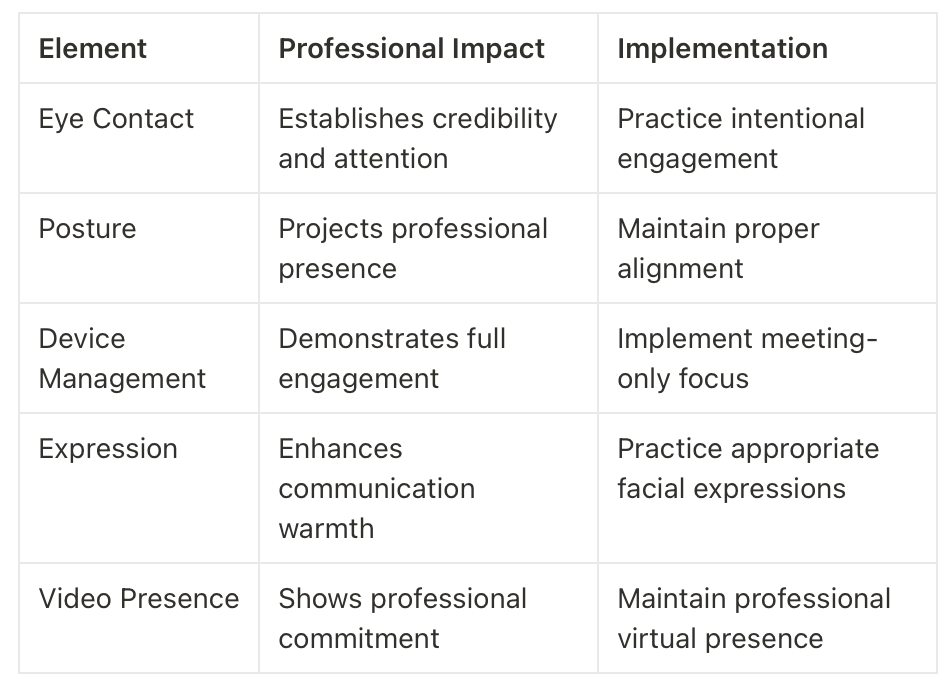As an experienced engineer and communicator, I'd like to share essential insights about non-verbal communication—those crucial signals encompassing body language, tone, and virtual presence that can significantly enhance your engineering career. Whether you're presenting a design in person or participating in a virtual meeting, this guide will help you communicate more effectively.
🤔 The Importance of Non-Verbal Communication
Consider this scenario: During a meeting, your lead engineer is discussing a critical project timeline, and you receive a notification. By checking your phone, even briefly, you're sending an unintended message about your engagement and priorities. Non-verbal cues often communicate more powerfully than technical expertise. For emerging engineers, mastering these subtle skills can differentiate you, build credibility with your team, and accelerate your professional growth.
🧍 Body Language: A Professional Asset
Let's examine the fundamental aspects of body language and its impact on professional interactions:
Eye Contact: Maintaining appropriate eye contact demonstrates attentiveness and builds trust. This fundamental principle is supported by leadership expert Simon Sinek (Simon Sinek's Work).
Professional Posture: Your posture communicates confidence and engagement. Maintaining an upright position conveys professionalism and respect.
Device Management: Minimize distractions by keeping devices away during meetings. This practice ensures full presence and participation.
Professional Tip: Demonstrate engagement by maintaining an attentive posture during meetings—it significantly impacts how your contributions are received.
🗣️ Vocal Tone: A Critical Communication Tool
The impact of tone in professional communication cannot be overstated. Through experience, I've learned that how we deliver a message often matters as much as its content. This observation is supported by research and industry experts (Forbes Article).
Positive Expression: A genuine smile influences vocal tone, particularly in virtual communications.
Tone Awareness: When uncertain about your delivery, seek feedback from colleagues.
Professional Development: Consider maintaining a communication journal to track and improve your interaction patterns (Todoist Article).
💻 Virtual Communication: Best Practices
In our increasingly digital workplace, virtual communication requires specific considerations regarding video presence:
Camera Usage: Enable your camera during important discussions to demonstrate professional courtesy.
Meeting Size Considerations: While camera use may be optional in large meetings, activate it when speaking or presenting.
Virtual Eye Contact: Enhance engagement by directing your eyes toward the camera when speaking.
Important Note: Maintain focus during virtual meetings—visible multitasking can diminish your professional presence.
Professional Communication Framework
Here's a structured approach to non-verbal communication, based on research and professional experience:
📚 Professional Resources
Simon Sinek's Research: Insights on trust and leadership presence.
Forbes Professional Development: Communication enhancement strategies.
Professional Reflection Guide: Self-assessment techniques.
ASCE Professional Development: Practical application opportunities.
Deep Work Methodology: Focus enhancement strategies.












